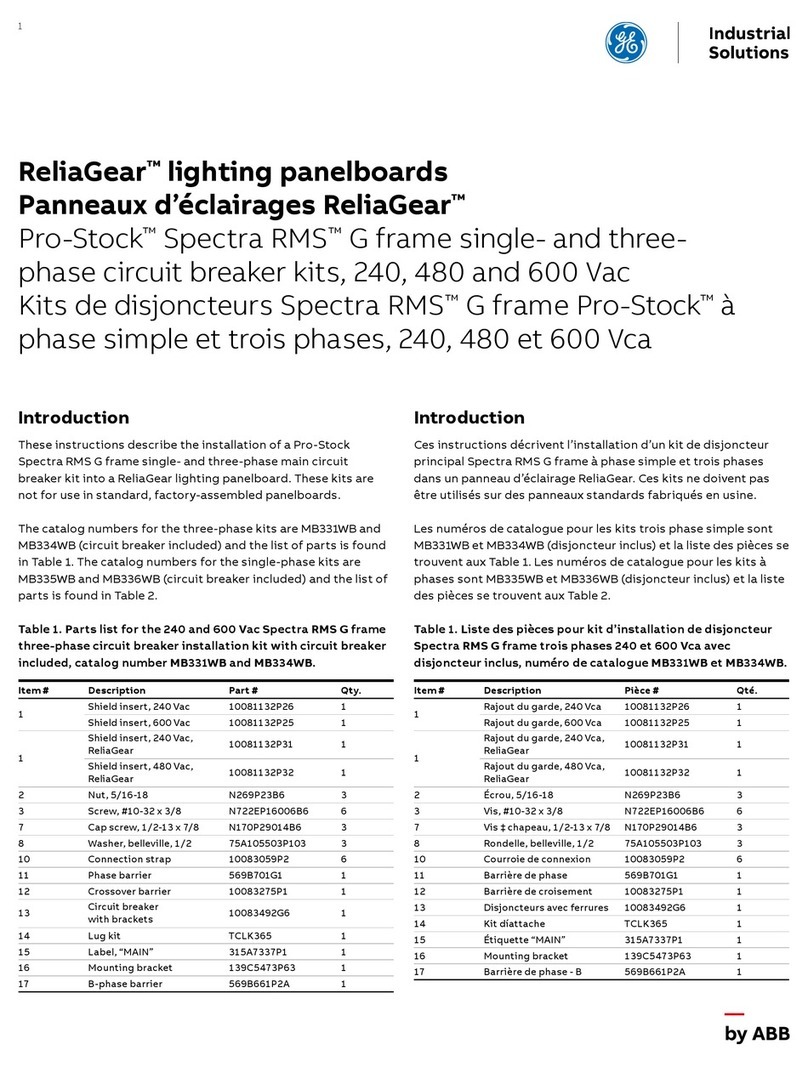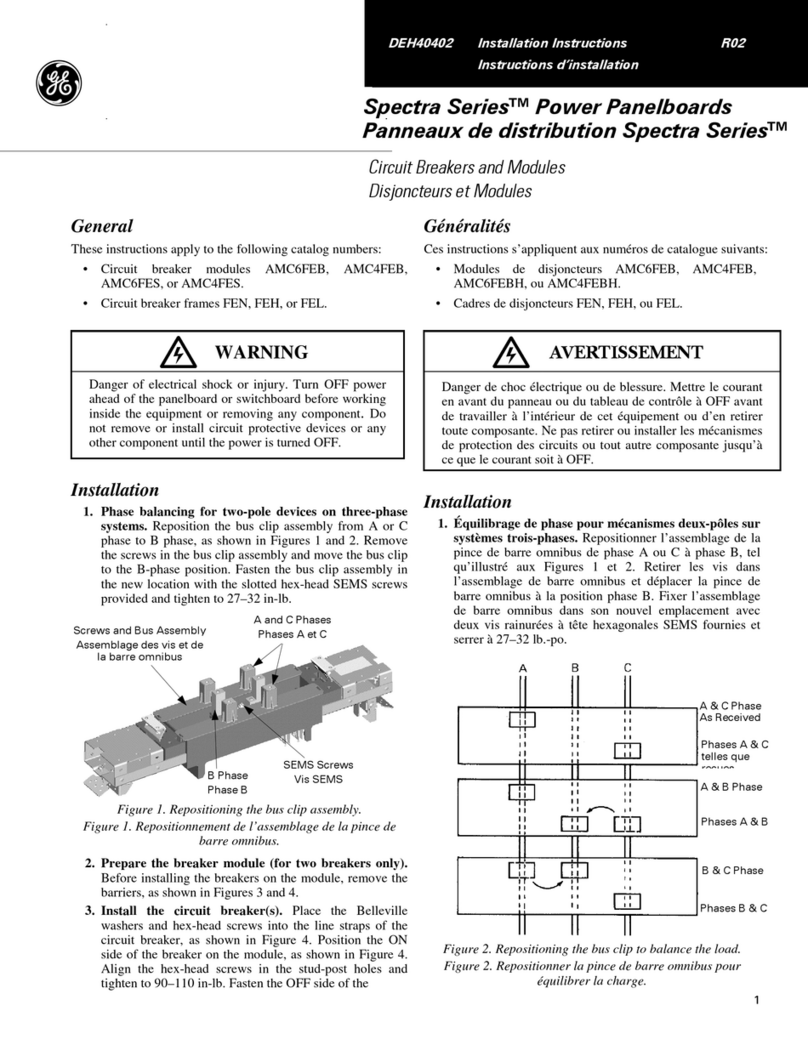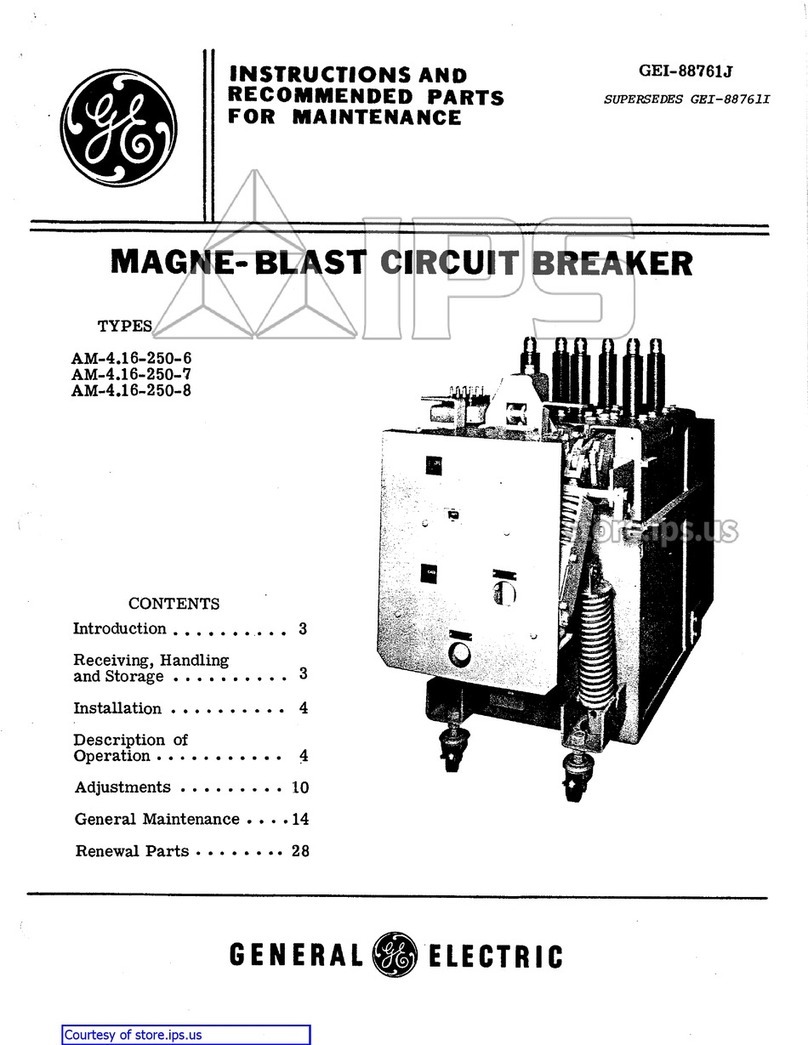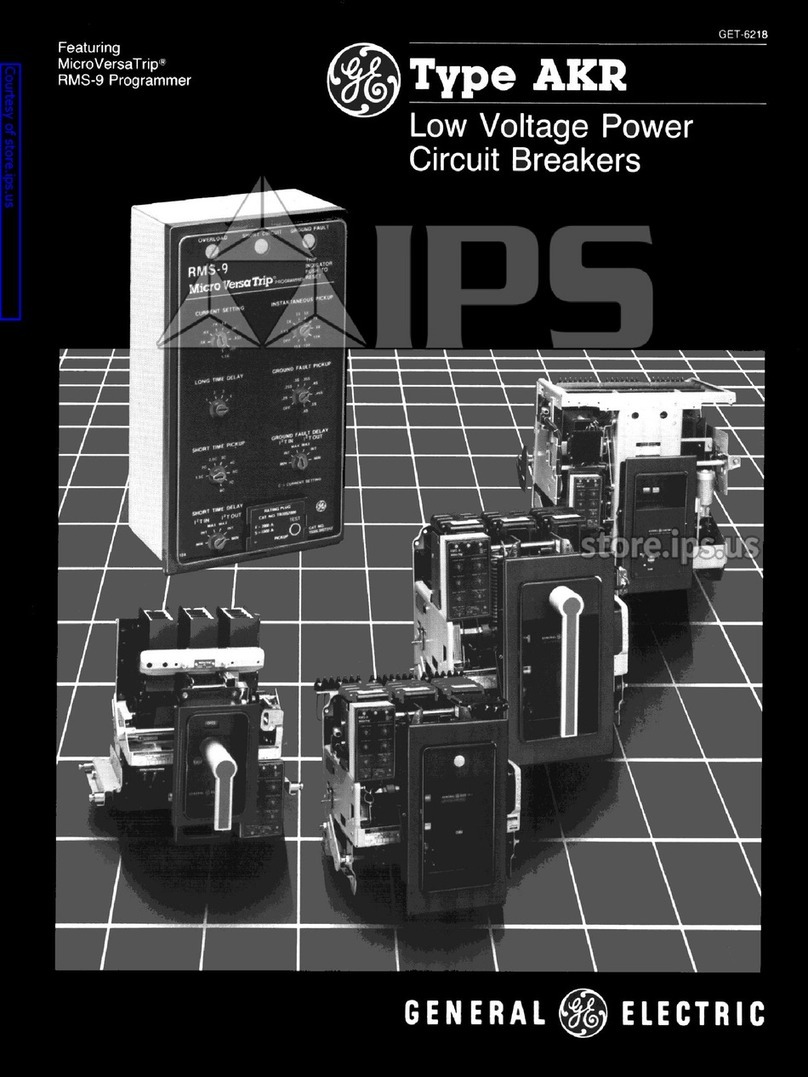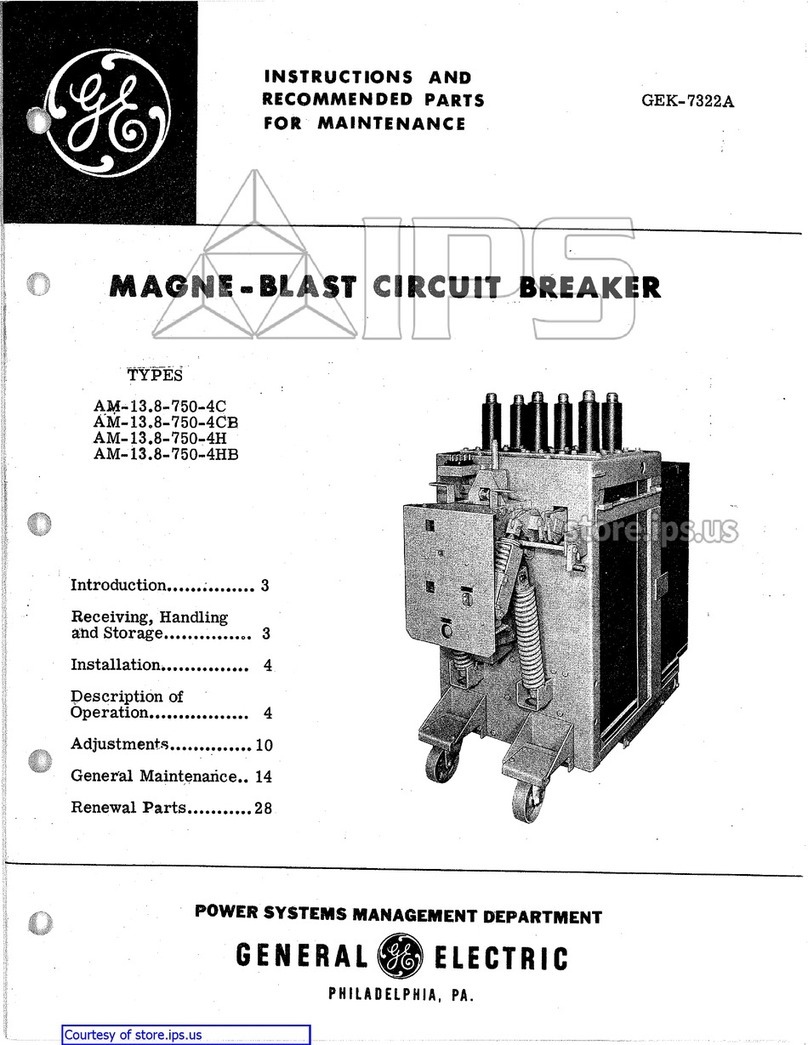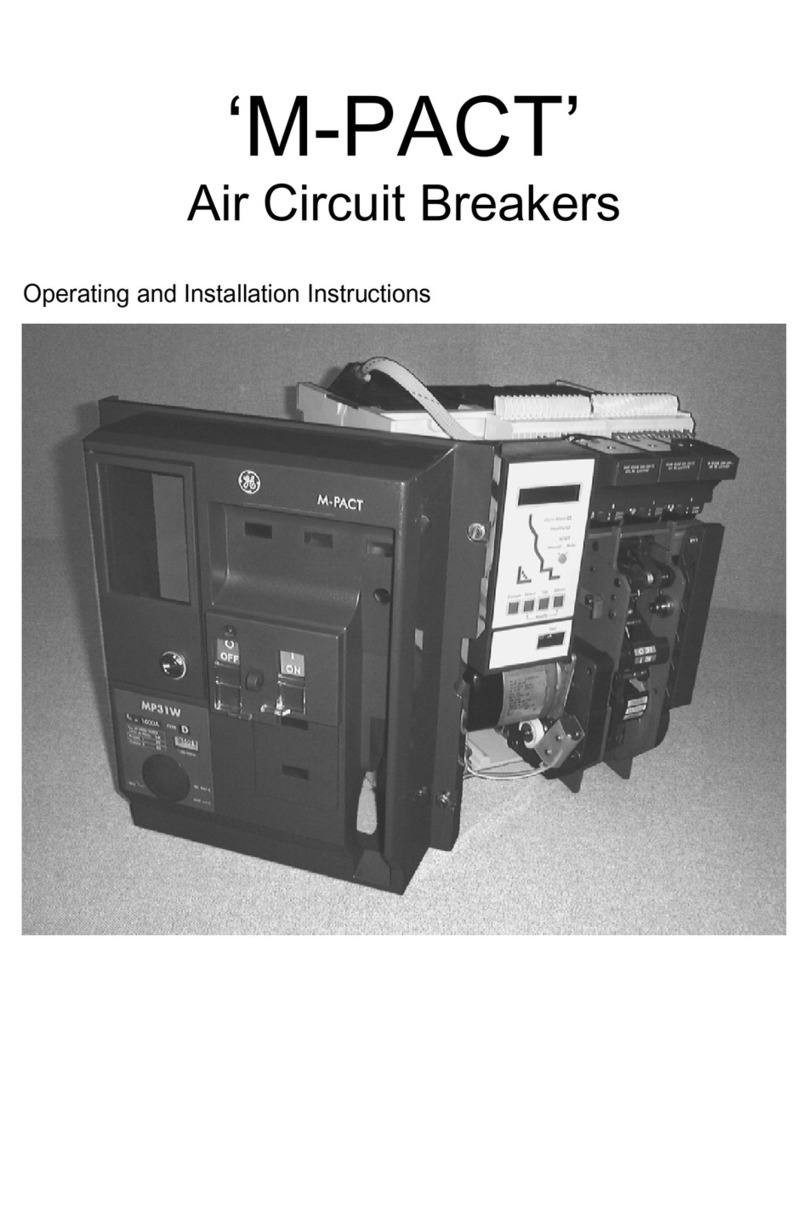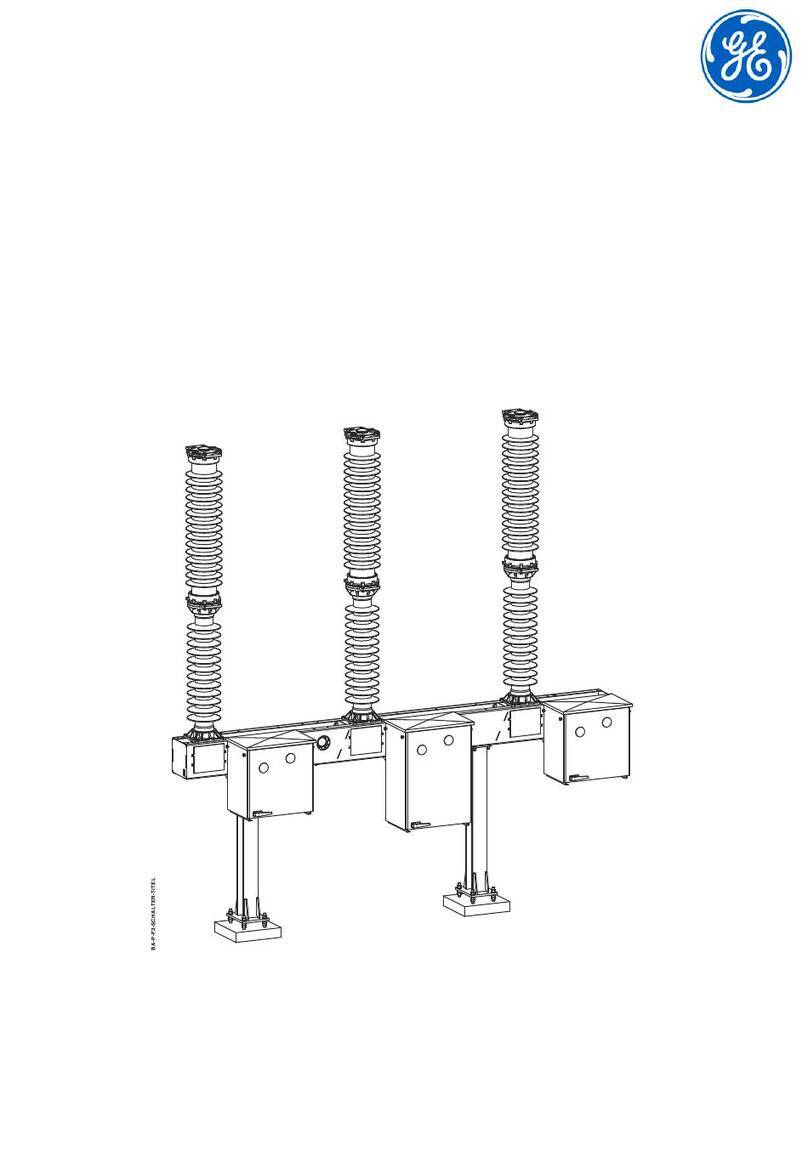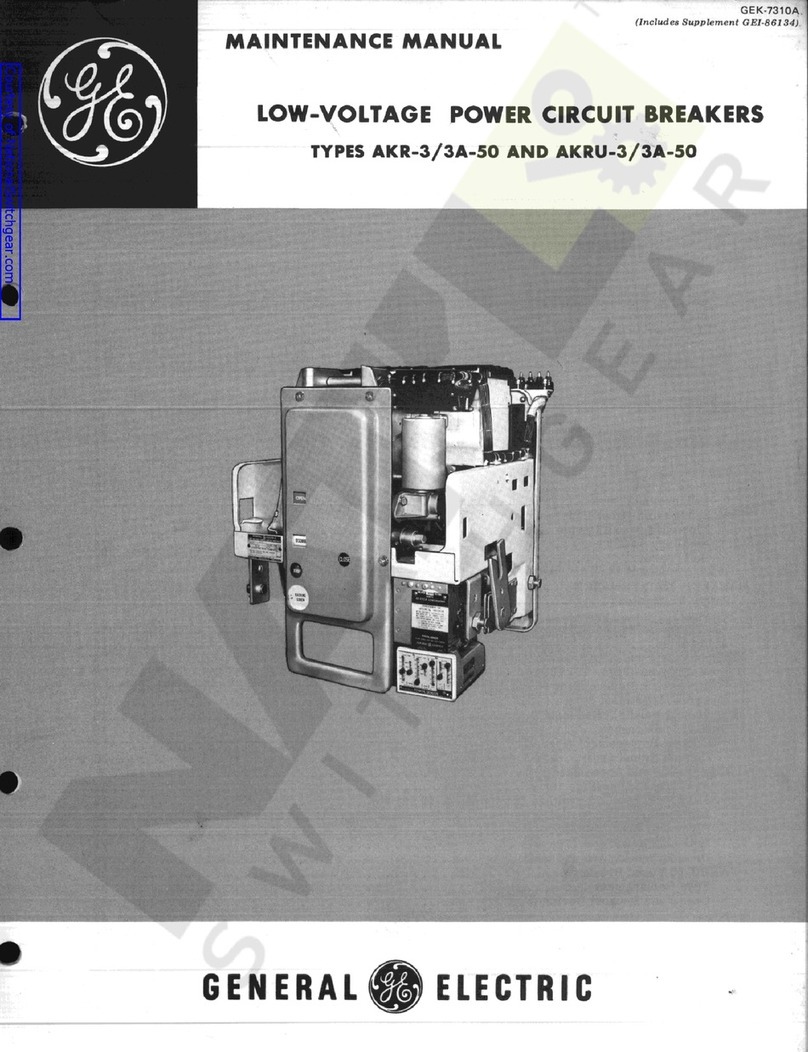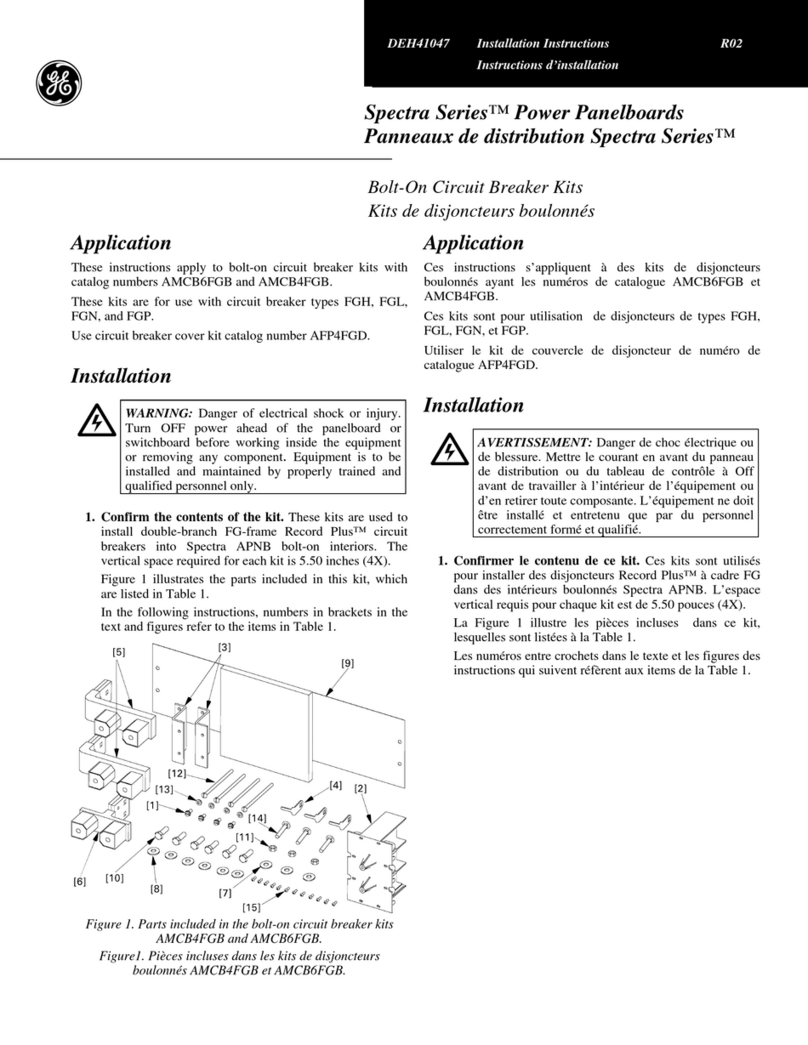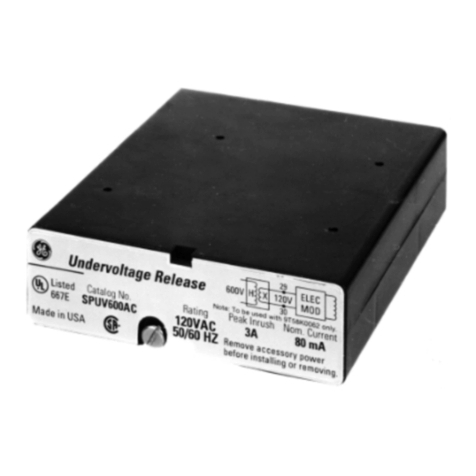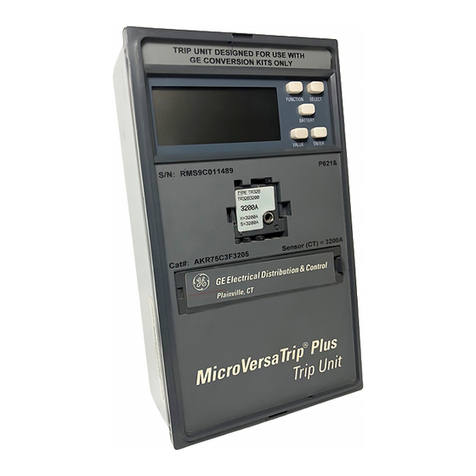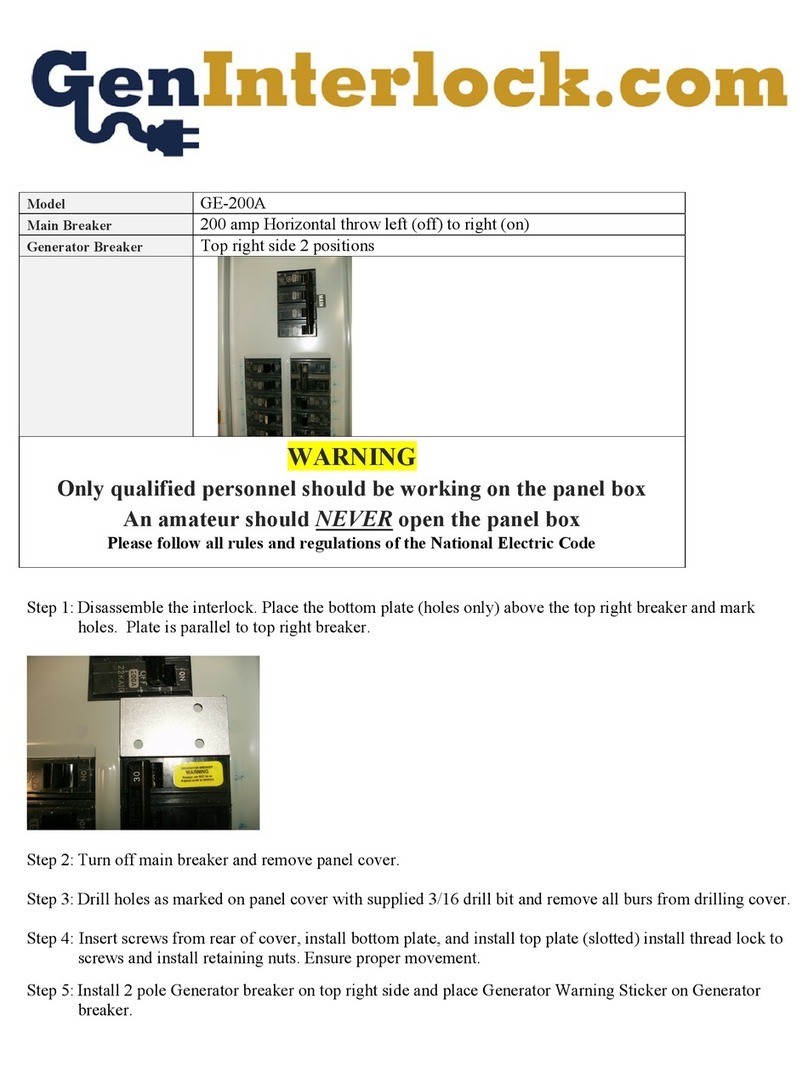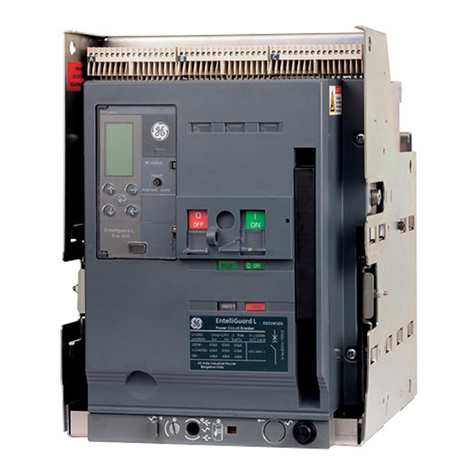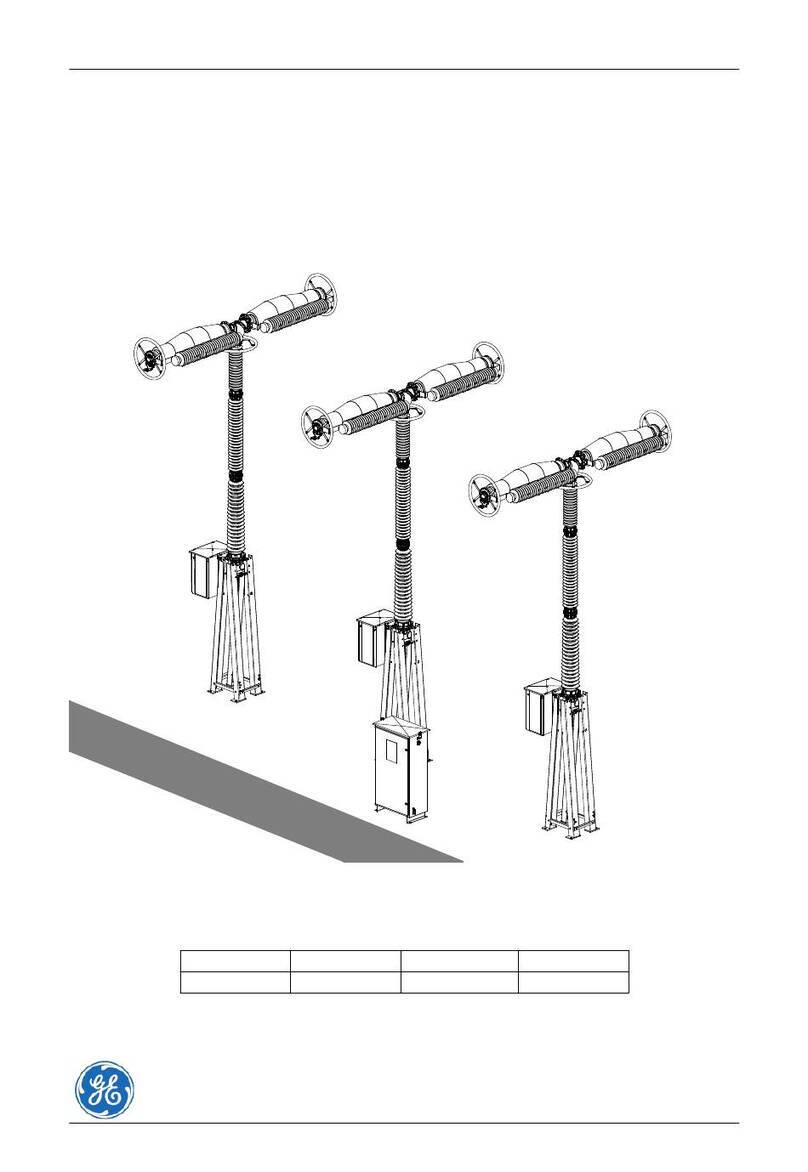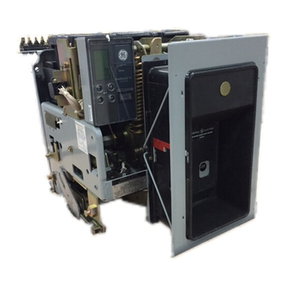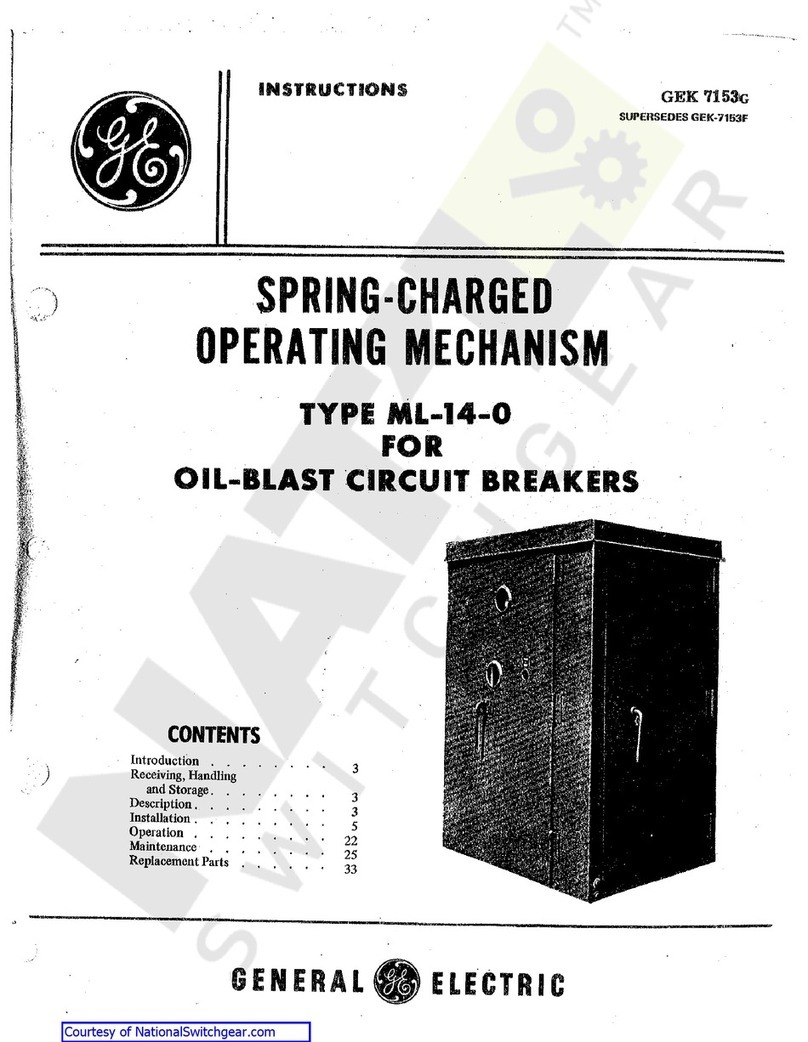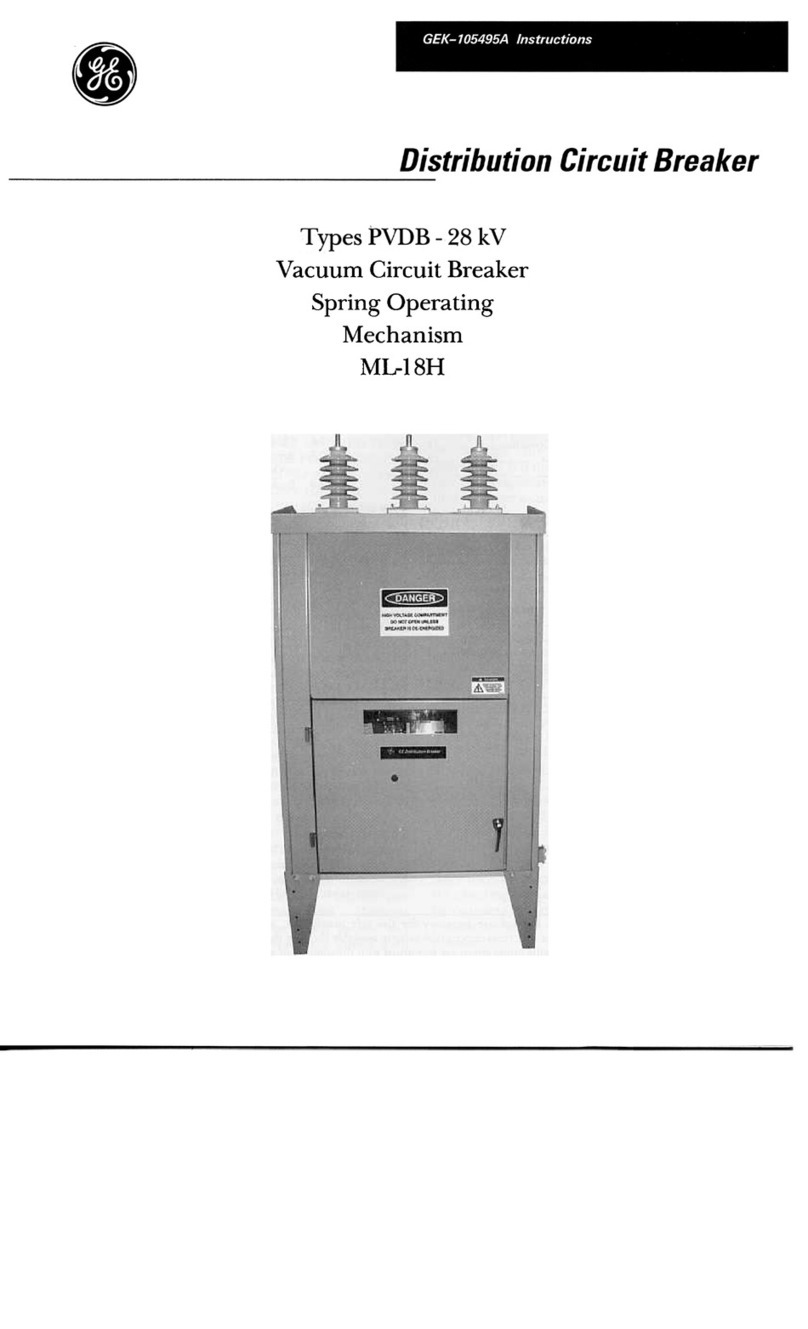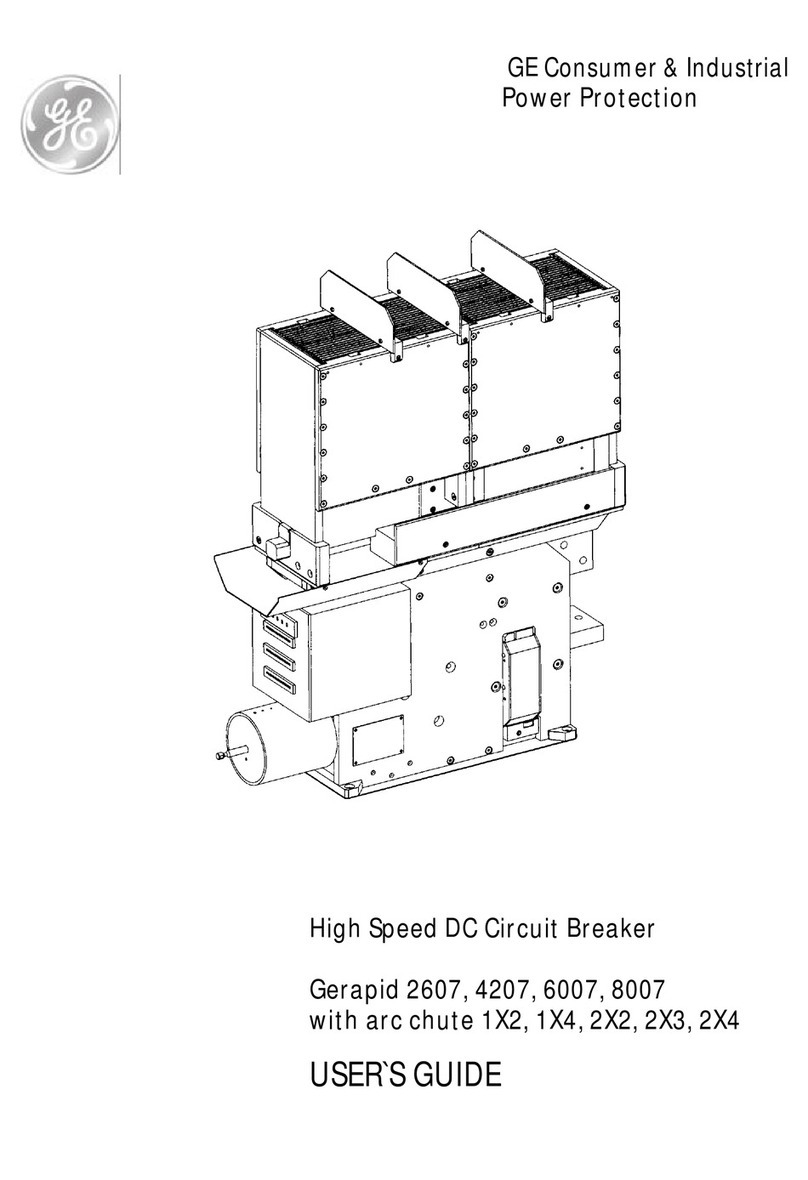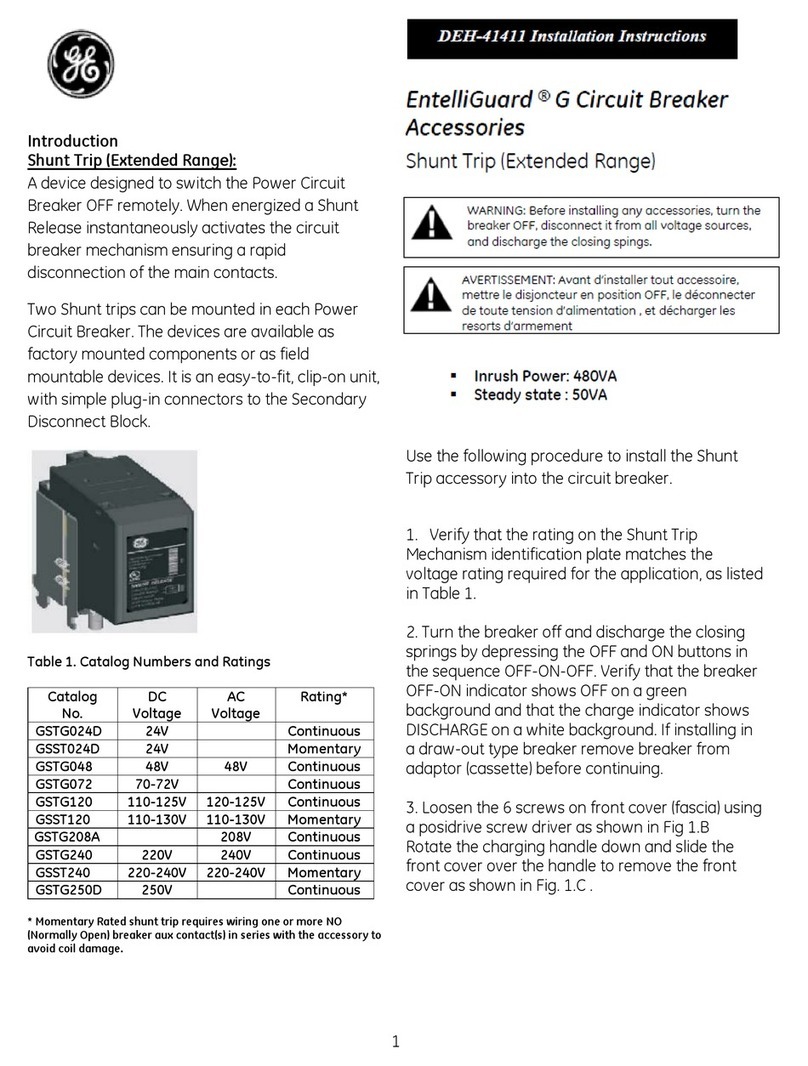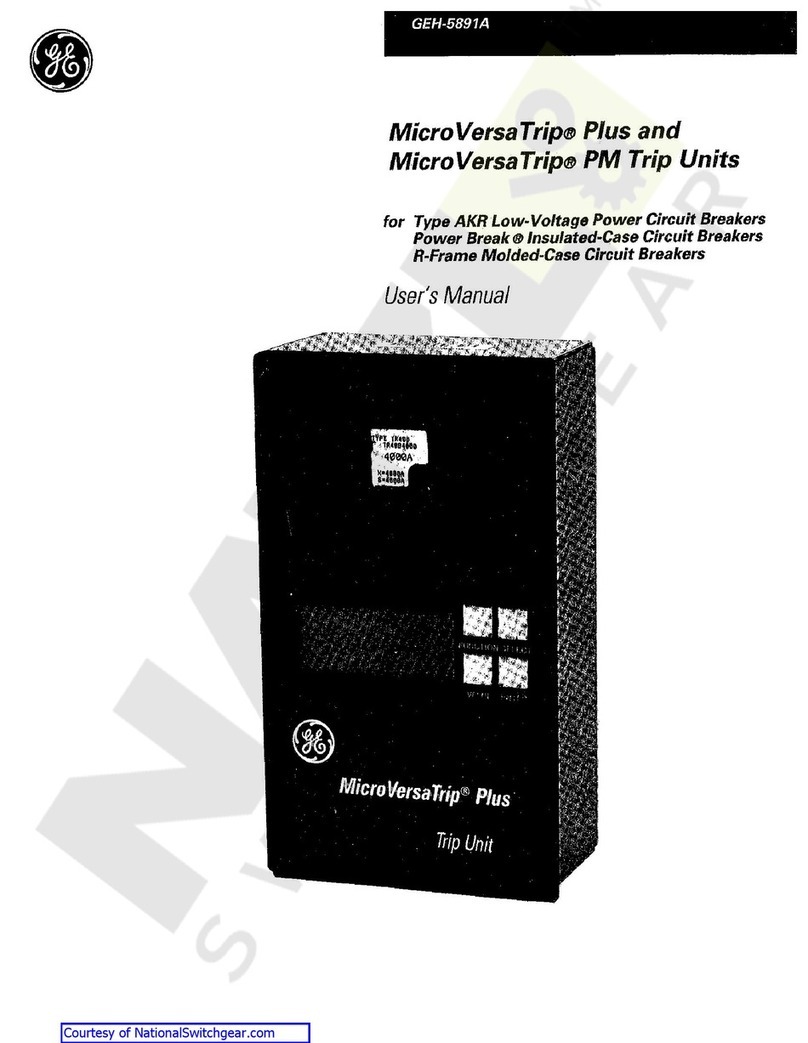
4
PowerVac
®Vacuum Circuit Breaker
With ML-18 or ML-18H Mechanism
SECT ON 1— ntroduction
This manual provides the information needed by the user to
properly install, operate and maintain the ML-18 or ML-18H
PowerVac® Breaker.
The PowerVac® vacuum breaker is a horizontal drawout,
removable and interchangeable interrupting element for use
in metalclad switchgear to provide protection and control of
electrical apparatus and power systems. To the extent
required applicable ANSI, I and N MA Standards are met.
No such assurances are given with respect to local codes and
ordinances, as they vary greatly.
1.1—Safety
ach user must maintain a safety program for the protection
of personnel, as well as other equipment, from the potential
hazards associated with electrical equipment.
The following requirements are intended to augment the
user's safety program, but NOT supplant the user's
responsibility for devising a complete safety program. The
following basic industry practiced safety requirements are
applicable to all major electrical equipment such as switchgear
or switchboards. G neither condones nor assumes any
responsibility for practices which deviate from the following:
1. ALL CONDUCTORS MUST B ASSUM D TO B
N RGIZ D UNL SS TH IR POT NTIAL HAS B N
M ASUR D AS GROUND AND AD QUAT CAPACITY
GROUNDING ASS MBLI S HAV B N APPLI D TO
PR V NT N RGIZING. Many accidents have been
caused by unplanned energization from non-recognized
back feeds, equipment malfunctions, and from a wide
variety of sources.
2. VACUUM CIRCUIT BR AK RS AR NOT TO B
CONSID R D AS AN ISOLATING M ANS FOR
PROVIDING SAF TY TO P RSON L UNL SS
WITHDRAWN TO FULLY “DISCONN CT D/T ST”
POSITION. In the “CONN CT D” position with the
interrupter contacts separated (breaker open), small
leakage current with high voltages can flow across the
gap. In addition, leakage current can flow across the
bottle or interrupter assembly if dirty or high humidity is
providing a path for tracking.
3. It is strongly recommended that all equipment be
completely de-energized, verified to be “dead”, then
grounded with adequate capacity grounding assemblies
prior to any maintenance. The grounding cable
assemblies must be able to withstand energizing fault
levels so that protective equipment may clear the circuit
safely. Additional discussion on this concept is covered in
Chapter 20 of ANSI/NFPA 70B, lectrical quipment
Maintenance.
4. Although interlocks to reduce some of the risks are
provided, the individual's actions while performing service
or maintenance are essential to prevent accidents. ach
person's knowledge; mental awareness; and planned and
executed actions often determine if an accident will
occur. The most important method of avoiding accidents
is for all associated personnel to carefully apply a
thorough under-standing of the specific equipment from
the viewpoints of its purpose, its construction, its
operation and the situations which could be hazardous.
All personnel associated with installation, operation and
maintenance of electrical equipment, such as power circuit
breakers and other power handling equipment, must be
thoroughly instructed, with periodic retraining, regarding
power equipment in general as well as the particular model of
equipment with which they are working.
Instruction books, actual devices and appropriate safety and
maintenance practices such as OSHA publications, National
lectric Safety Code (ANSI C2), National lectric Code, and
National Fire Protection Association (NFPA) 70B lectrical
quipment Maintenance must be closely studied and
followed. During actual work, supervision should audit
practices to assure conformance.
1.2—Maintenance
xcellent maintenance is essential for reliability and safety of
any electrical equipment. Maintenance programs must be
tuned to the specific application, well planned and carried out
consistent with both industry experience and manufacturer's
recommendations. Local environment must always be
considered in such programs, including such variables as
ambient temperatures, extreme moisture, number of
operations, corrosive atmosphere or major insect problems
and any other unusual or abusive condition of the application.
One of the critical service activities, sometimes neglected,
involves the calibration of various control devices. These
monitored conditions in the primary and secondary circuits,
sometimes initiating emergency corrective action such as
opening or closing circuit breakers. In view of the vital role of
these devices, it is important that a periodic test program be
followed. As was outlined above, it is recognized that the
interval between periodic checks will vary depending upon
environment, the type of device and the user's experience.
It is the G recommendation that, until the user has
accumulated enough experience to select a test interval
better suited to the individual requirements, all significant
calibrations be checked at an interval of one to two years.
To accomplish this, some devices can be adequately tested
using test sets. Specific calibration instructions on particular
devices typically are provided by supplied instruction books.
Instruction books supplied by manufacturers address
components that would normally require service or
maintenance during the useful life of the equipment.
However, they can not include every possible part that could
under adverse environments. Maintenance personnel must
be alert to deterioration of any part of the supplied
switchgear, taking actions, as necessary to restore it to
serviceable status.
Industry publications of recommended maintenance practices
such as ANSI/NFPA 70B, lectrical quipment Maintenance,
